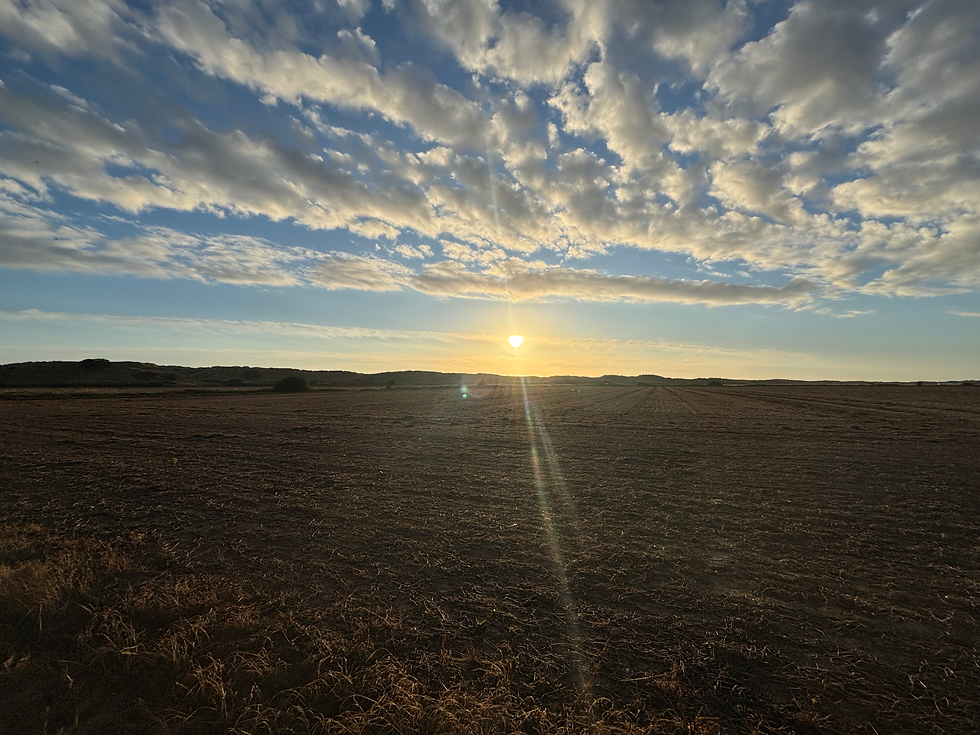Blyth's Reed Part Two
- tg42lowcarbonbirding
- Jun 5, 2024
- 3 min read
The second Blyth's Reed Warbler for TG42 - hot on the heels of the first - was present in Eccles then Sea Palling, from Seaman Sam's to Dereck's, before being lost. It was sound recorded and excellent photos were obtained by Andy Kane. Both recordings and photos are below..
As is sometimes the case, having hoped for a Blyth's Reed in the square for several years, we've been blessed with two in just over a week. The Winterton bird was a the first and was very enjoyable but the bird in Sea Palling was just superb. Andy messaged before six with a Blyth's Reed Warbler singing just down the road. I was already up and about so shot off to the area around the conifers where he was waiting. Very shortly after I arrived the bird started singing very well close by. The song sounded great, with lots of whistled phrases and a slightly more even delivery than a Marsh Warbler, but still with plenty of mimicry, as you can hear in the audio. The typical whistles and descending phrases of Blyth's were clearly present.
We were still cautious despite Andy being 95% sure, and the next 30 minutes confirmed his identification of a Blyth's Reed. Andy also had some photos of the bird and the wing length was visible in one. I had my contact lenses in and it was difficult to see the wing detail on the camera screen but it seemed good for Blyth's too. Fortunately, the bird decided to sit up on a blackthorn twig and show itself off for us. The light was just about perfect and an obvious grey tone to the mantle was present, completely unlike both Reed Warbler and Marsh Warbler. The wing was plain with a slight bronzey / green toned panel visible. The head had a strong fore-supercilium and the underparts were really quite pale, verging on silky-white when out in the open, but a little more changeable with the vegetation.
I took several recordings (see below) and we both thoroughly enjoyed seeing such a rare bird in the square. It was fantastic to see one so well in the village. Ryan arrived and also enjoyed views and plenty of singing but the bird was restless and had moved about two to three hundred metres since Andy first heard it. We eventually stopped hearing it past Ruben's place and there was no further sign despite searching with Mick S. and Tim H. The bird was close to a public road so it was possible to make the sighting public. Amazingly, while we searched, Andy rounded a corner to the paddock entrance and almost walked into another male Red-backed Shrike, literally just feet away. We all managed a few brief views before the bird flew behind the conifers sand disappeared.
The pix below are all by Andy Kane.

Note the overall grey cast, the silky-white underparts, the fore-supercilium and the shortish looking wings. A superb bird.

Showing the fore-supercilium well

This great photo shows the short wing-length (compared to Marsh and Reed) and the wing features (emarginations and overall tones) well


The sound recordings were all made by me.
Despite - or perhaps because of - the general lack of birds these days and the seeming inexorable decline of the natural world, events like this are even more enjoyable than in the past and provide inspiration and exhilaration in equal measure.




Comments